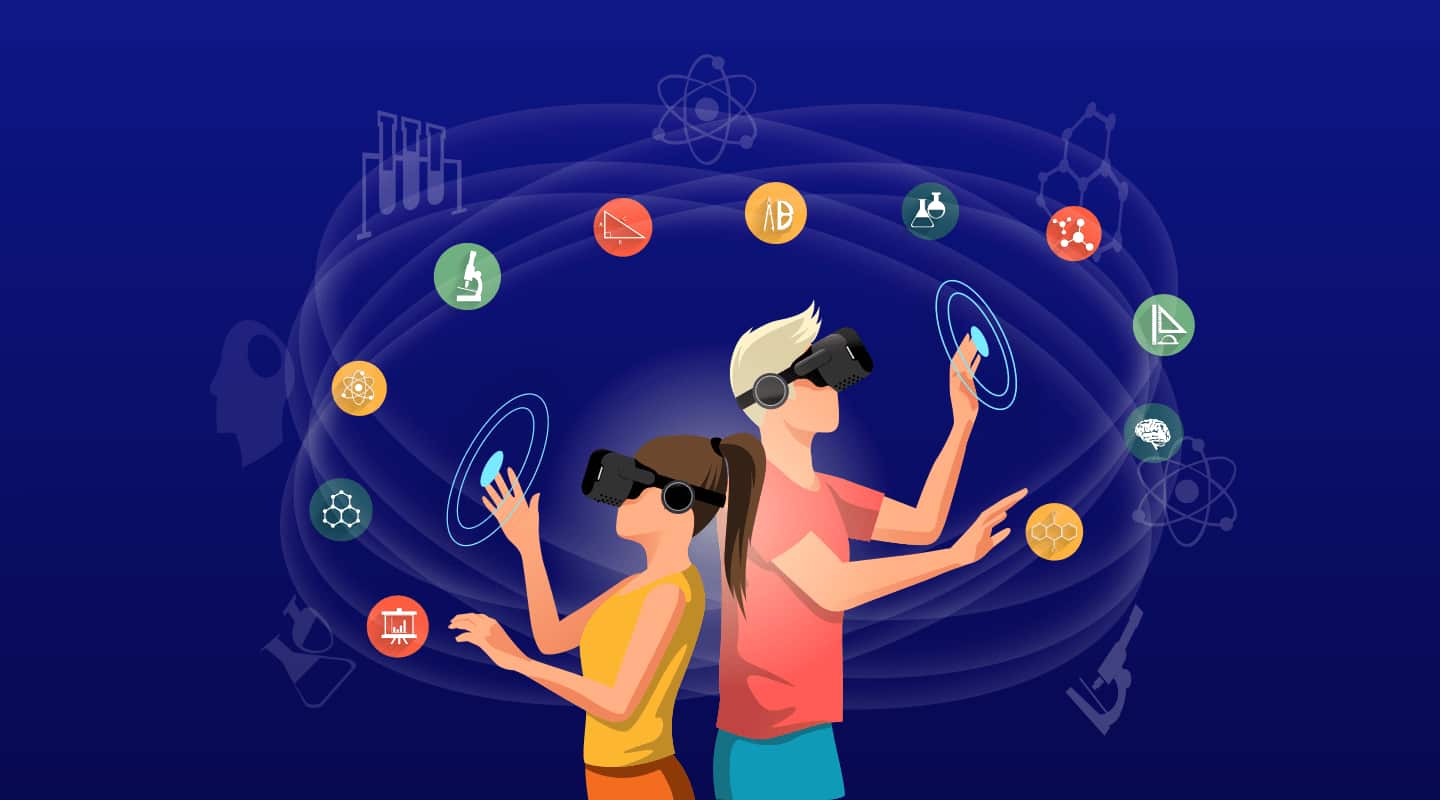Virtual Reality (VR) and Augmented Reality (AR) have emerged as strong tools with transformative promise in education in recent years. VR and AR have the potential to transport learners to new worlds, improve knowledge, and engage students in unprecedented ways by harnessing immersive technologies. In this blog review, we will look at the intriguing prospects of virtual reality and augmented reality in education, as well as their potential to alter the learning experience.
Virtual Reality (VR)
VR technology produces a simulated environment in which users may interact and explore. VR provides new chances for immersive learning in the field of education. Students can use VR headsets to visit historical sites, explore distant planets, study virtual species, and immerse themselves in simulations that mimic real-world circumstances. By allowing students to experience topics personally, this hands-on method generates interest, increases engagement, and fosters deeper understanding.
Augmented Reality (AR)
AR technology adds digital information and objects to the actual world by superimposing virtual features on top of it. AR has enormous potential in teaching because it links the physical and digital worlds. Students can engage with virtual items placed on their surroundings by using AR-enabled devices such as smartphones or tablets. They can engage with virtual creatures and control virtual models while exploring anatomy in 3D. AR turns passive learning into active, dynamic experiences that encourage critical thinking and problem solving.
Immersive experiences in VR and AR attract learners' attention and stimulate their senses. These technologies increase engagement and foster deeper knowledge by creating a multimodal experience. Students' spatial awareness and visualization skills improve as they manipulate and interact with virtual objects, making it easier to visualize complicated concepts. Because VR and AR are interactive, they inspire exploration, experimentation, and discovery, resulting in a more active and involved learning experience.
Students can use VR and AR to bridge the gap between theory and real-world application. These technologies give context for learning and allow students to apply information in real circumstances by immersing them in authentic virtual or augmented environments. VR simulations, for example, can imitate medical operations, allowing prospective healthcare workers to practice skills in a safe and regulated setting. AR can be used to superimpose information and instructions on machines or objects, benefiting students in technical training. This authentic learning experience prepares students with real-world challenges and improves their career preparation.
VR and AR also make collaborative and social learning possible. Students can collaborate with friends from all over the world through multiplayer VR experiences, solving issues and exchanging ideas. AR applications allow students to share their augmented experiences, which encourages conversation and peer-to-peer learning. These collaborative elements foster teamwork, communication skills, and the development of a shared understanding.
The potential uses of VR and AR in education are numerous and growing. These technologies have the ability to transform how subjects are taught and understood, from science and history to art and mathematics. Using VR and AR, educators may develop interactive courses, virtual field excursions, immersive simulations, and engaging assessments. The possibilities for educational experiences are only limited by your creativity, thanks to the ongoing improvement of technology and the rising availability of VR and AR tools.
VR and AR have the potential to change education by enabling immersive, interactive, and experiential learning. VR and AR have the potential to alter the way we teach and learn by immersing students in multimodal settings, providing authentic learning experiences, encouraging collaboration, and expanding learning opportunities across courses. As these technologies advance, educators may use them to uncover new dimensions in education, motivating students and preparing them for future challenges.




Hiç yorum yok:
Yorum Gönder